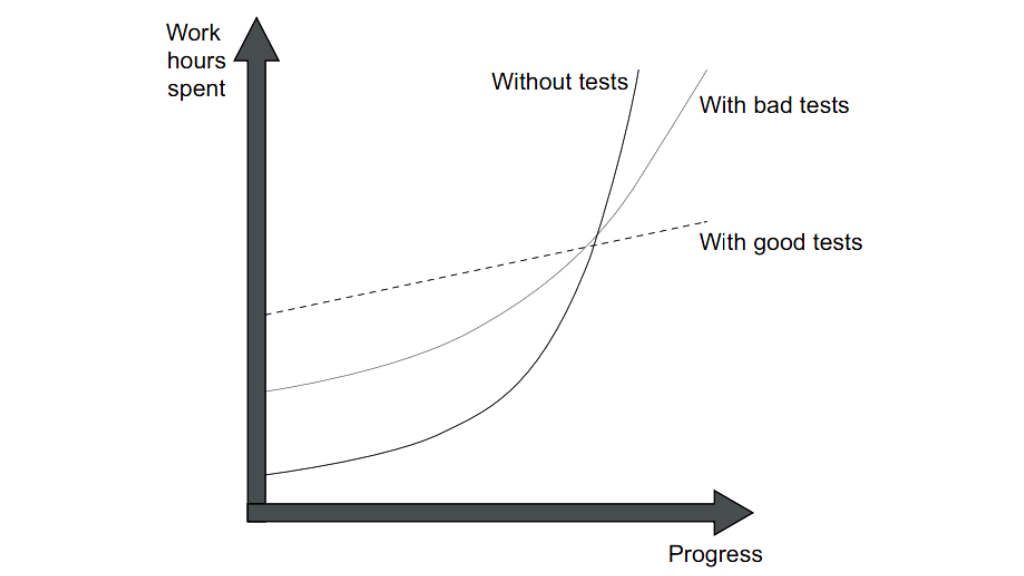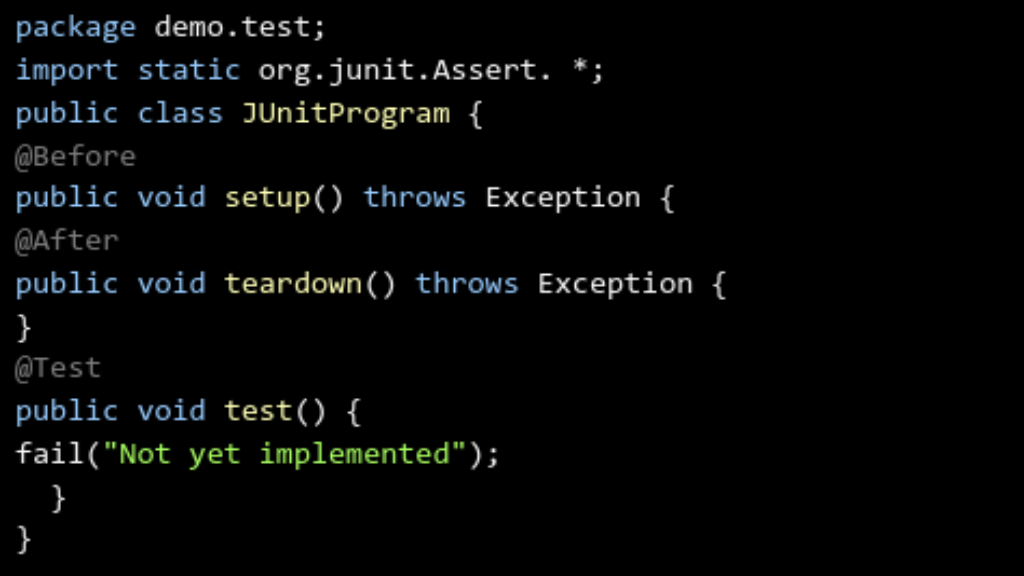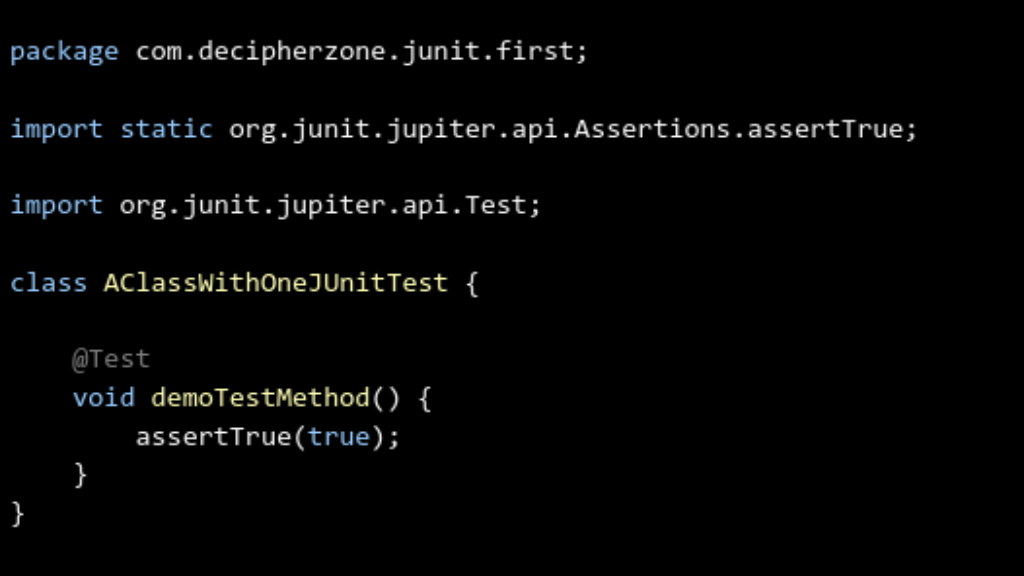Best Practices for Unit Testing in Java. Unit testing is not a new concept in the software development industry. It has been around since the 1970s, the early days of the Smalltalk programming language. Unit testing has proved itself as one of the best ways to improve code quality for developers. The concept of unit testing in Smalltalk, firstly introduced by Kent Beck has been carried on into different programming languages making it a helpful practice in software development.
Read: Reasons and Strategies To Improve Code Quality
So, before moving to the best practices for unit testing in Java, let’s understand what unit testing is and why you should adopt Unit testing for better code.
What is Unit Testing?
Unit testing is the process of software development where the smallest piece of application code, called units, are independently tested for determining their performance. The purpose of unit testing is to validate every unit of the code is working as expected and is done by developers at the time of the coding phase (development) of an application.
As defined by Roy Osherove in his book The Art of Unit Testing, “A unit test is a piece of code that invokes a unit of work and checks one specific result of that unit of work. If the assumptions on the result turn out to be wrong, the unit test has failed. It is possible for a unit test to cover just one method or multiple classes.”
Read: Best Practices for Testing APIs
A unit can be a method, function, module, object, or procedure. With the unit test, developers can separate a code section to verify its correctness. Unit tests are conducted before integration testing. Unit testing is a white box testing technique performed either by developers or quality analysts.
Unit testing can be done in one of two ways, i.e., manual testing or automated testing. Manual testing is the test cases executed manually without using any tool that you cannot rely upon and is time-consuming too. On the other hand, automated testing is the test cases executed automatically using tools, making it reliable and fast.
Why Adopt TDD and Unit Testing?
Before we understand why one should adopt Test-Driven Development (TDD) and Unit Testing while application development, let’s understand what TDD is.
Test-Driven Development (TDD) is the core practice in one of the agile development processes, Extreme Programming (XP). TDD is a development technique that blends testing, implementation, and program design in a micro-iterations series that focuses on simplicity and feedback. It uses a test-first approach where test code is written one at a time before actual code and immediately followed by the code generation needed to pass the test case.
Read: Aligning Automation Testing With Manual Testing
Adopting Test-Driven Development and Unit Testing helps in finding errors at the initial development stage, enables safe refactoring - a process of restructuring code while maintaining its original functionality to improve internal code, provides documentation about the system units work, reduces regression testing, makes development flexible, and improves coupling in the application system architecture.
What Makes A Test Good or Bad?
Being able to understand what a unit of work is not enough. Developers or QA engineers who try to test code often give up or don’t perform unit tests at all. Instead, they start relying on integration tests and systems that will be performed in a much later phase of development. Other than that, some developers resort to manual code testing through custom test apps or use the product they’re developing to invoke code.
Besides, there’s no point in writing bad tests unless you are learning the way to write a good test. And if you are about to write a bad test without even realizing it, you should not even write it at all and save yourself the trouble it will cause in maintenance and time schedules.
Read: Best Practices & Tools for DevOps Testing Strategy
Although unit testing helps maintain project growth it is not enough to write tests, badly written tests can still result in a decline in development speed but are less prominent than having no tests written at all. In the grand scheme of things, nothing changes as you can see in the image. Stagnation might take longer for such a project, but it still is inevitable.

One thing to note is that not all test codes are created similarly to one another. Some of them are valuable and give a lot to the quality of the application while others raise false alarms and don’t allow developers to find regression errors and remain difficult to maintain. Therefore, many new developers fall into the trap of writing unit tests for unit testing without understanding whether it is going to help the project or not.
Read: How to Build Microservices in Java
It is quite easy to create tests with little to no value due to higher maintenance costs, developers should focus on high-quality tests that can help in sustainable application development.
Properties of a Good Unit Test
A good unit test should include the below-mentioned properties:
-
Should be easy to implement.
-
Be automated and iterative.
-
Should be relevant in the future.
-
Should have complete control over the unit being tested.
-
Run quickly.
-
Anyone should be capable of running the test easily.
-
The result should be consistent until the production code gets changed.
-
Should be isolated and run independently from other tests.
-
If the test fails, it should easily detect the expectation while determining the way to point out the problem.
-
Should be readable, trustworthy, and maintainable.
Best Practices For Unit Testing in Java
Best Practices for Unit Testing in Java. Now that we know what unit testing is and what makes a unit test good, let’s move on to the best practices for unit testing in Java.
-
Arrange Act Assert
A unit test is executed in three parts. In unit testing, first, the small code for testing is initialized and is called system under test (SUT). Then some stimulus is implied on the system under test by calling a method. Finally, the result is observed to determine if the unit meets the expectations. These three phases of unit testing are also called Arrange, Act, and Assert (AAA). If somehow a test case fails the underlying problem is indicated.
-
Package Naming Conventions
It is crucial to create a similar package structure in the src/main/test directory for test cases to improve the readability and maintainability of the test code. In simple words, the test class package should match the source class package of the application code it will test.
-
Test Case Naming Conventions
The name of the test should be insightful, hence, helping users to understand the expectation and behavior of the test from the name itself. Also, the name of the test class must be the same as the original class but affixed with the test. Most importantly, the class organizing the test should be affixed with TestSuite.
-
Avoid Multiple Assertions
As we know by now unit tests check a small piece of code rather than the complete application system, adding multiple assertions can cause latency and low reliability because if one assertion clause throws an exception, other lines will not run in the test method.
However, if we keep the test assertions separate it will be easier to identify what functions have failed that makes it easier to fix the code.
-
Mock External Services
Mocking external services will help developers in handling scenarios where a unit of the application is not available for testing when needed.
Read: Principles of Web API Design
More often than not API calls to database services and service calls overlap different tests that can influence others' outcomes. So it is important to ensure that the network connection and database are not active during test execution.
-
Annotations
Using annotations like @Before, @After, and @BeforeClass from test frameworks like JUnit helps in preparing the tests system through object arrangement, data creation, and dropping all of it after isolation of test cases from each other.
-
80% Test Coverage
As a thumb rule, 80% of the code is covered by unit tests. Using tools like Cobertura and JaCoCo with Gradle or Maven generate reports from code coverage.
-
Automation
To improve the code reliability developers can automate test execution while developing new builds. It not only helps to avoid unfortunate regressions but also increases the feedback spoken.
How to Define a Unit Test in JUnit?
JUnit is a Java unit testing framework that is crucial for test-driven development. It has set a benchmark for testing by being compatible with all IDEs. JUnit is used by developers to write and run automated tests. It consists of different graphs that show the test progress. The graph shows green color if the test is running as expected otherwise it turns red. JUnit Testing allows developers to create bug-free and highly reliable code.
Read: Basic Usability Testing Techniques
To get started with defining unit testing, open eclipse and create a folder through File>New>Java Project. Now write the project name on the newly opened window. Either choose the default location or set a different path for all project files to be stored along with the log files, test.data, and reports. Click the Finish button and the project folder will be added to the project explorer.
Once the project folder is created, it is time to add a new JUnit Testcase to the folder. So you will open the SampleProject folder>right click on the src folder>file>New>JUnit Test Case.
Now the template file that will be created would be as follows:

@Test annotation is used to mark a test method, making the method execute the code under test.
A minimal test class in Java containing one minimal method will look something like shown below:

You can also use the assert method to check expected vs actual results. Assert statements allow developers to define test fail messages to identify and fix the problem.
Conclusion
In this blog we have covered what unit testing and test-driven development is, how you can identify a good or bad test, the properties of a good unit test, and best practices to follow for writing test codes. Not only that but we have also seen an example of creating a unit test in JUnit and we hope you find it helpful to get started with your next project.
If you are a business owner who wants to build applications with excellent code quality then hire developers from Decipher Zone Technologies that have experienced professionals to help you with your project idea.

